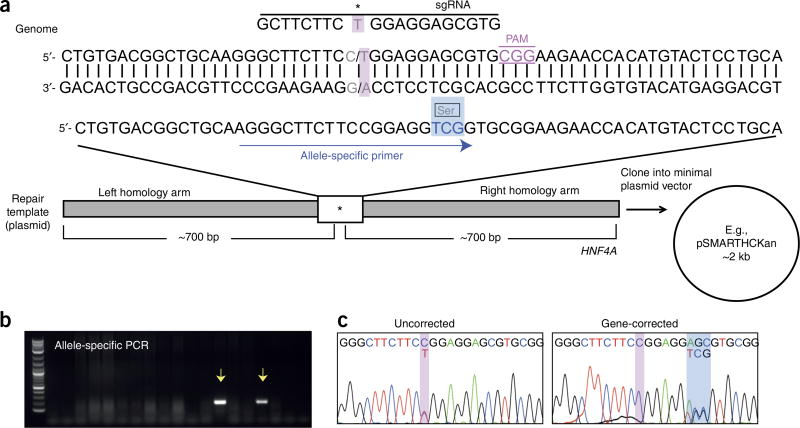Figure 4.
Simultaneous reprogramming and genetic correction of fibroblasts from a kidney disease patient with an autosomal dominant mutation in HNF4A. (a) Schematic diagram of the HNF4A gene and the homologous template used for gene repair. The patient mutation (c.187C>T) (pink box), sgRNA, and 3-bp synonymous change (blue box) incorporated into the repair template and allele-specific primer used for identification of gene-corrected clones are shown. (b) Representative gel following PCR analysis of 18 iPSC clones using primers that specifically amplify the successfully gene-edited allele. Arrows indicate PCR products amplified from correctly edited clones. (c) Sanger sequencing analysis of the HNF4A target region of an uncorrected and a gene-corrected iPSC clone. *, patient-specific mutation; Ser, serine residue.

